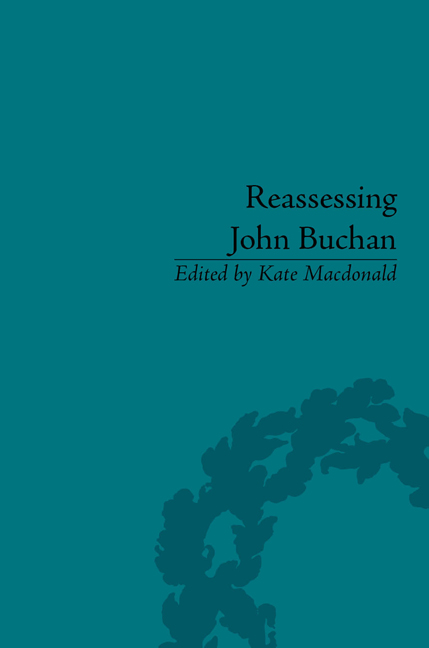Book contents
- Frontmatter
- CONTENTS
- List of contributors
- Introduction
- I Cultural Roots
- II Divided Loyalties
- III Literary Art
- 12 ‘A Fraud Called John Buchan’: Buchan, Joseph Conrad and Literary Theft
- 13 Aphrodite rejected: Archetypal Women in Buchan's Fiction
- 14 John Buchan: Politics, Language and Suspense
- 15 Buchan's Supernatural Fiction
- 16 The Anarchist's Garden: Politics and Ecology in John Buchan's Wastelands
- 17 Tracing The Thirty-Nine Steps
- Notes
- Works Cited
- Index
13 - Aphrodite rejected: Archetypal Women in Buchan's Fiction
from III - Literary Art
- Frontmatter
- CONTENTS
- List of contributors
- Introduction
- I Cultural Roots
- II Divided Loyalties
- III Literary Art
- 12 ‘A Fraud Called John Buchan’: Buchan, Joseph Conrad and Literary Theft
- 13 Aphrodite rejected: Archetypal Women in Buchan's Fiction
- 14 John Buchan: Politics, Language and Suspense
- 15 Buchan's Supernatural Fiction
- 16 The Anarchist's Garden: Politics and Ecology in John Buchan's Wastelands
- 17 Tracing The Thirty-Nine Steps
- Notes
- Works Cited
- Index
Summary
Introduction
Women characters are not principal protagonists in the fiction of John Buchan, but are cast in supporting roles that limit their possibilities. Buchan had also, most obviously in his earliest work, a tendency to be stereotypical and wooden when he wrote women characters. From the outset he cast them as subordinate individuals. His first heroine, Anne of Sir Quixote of the Moors (1895), was not even given a surname, an omission which can be read as a metonym for her dependency on her father and her betrothed, who have abandoned her. When she begins to exhibit signs of independence towards the end of the novel she is also abandoned by the hero. In treating women characters as secondary in almost all respects Buchan was simply reflecting his own society, but was also participating in the Victorian literary tradition of the male romance, by, for example, H. Rider Haggard, Arthur Conan Doyle and even Joseph Conrad, which had little room for women protagonists. Buchan was eventually able to write women well, but he continued to resist using them as principal characters, or to tell their stories. He did not focalize a woman character, allowing her to tell her own story in her own words, until he wrote Janet Raden, in John Macnab in 1923, when he was nearly fifty years old. This chapter explores how Buchan wrote women, and how his depiction of women characters reflected the changing lives of modern Western women. In looking at how Buchan's attitude changed towards his women characters, we may also arrive at an understanding of the kind of fiction he was writing.
Buchan began his writing career in a period where literary production, and innovation, was closely connected to the main social developments of the age. He was contemporaneous with the Fabians, the New Woman and with feminist political ferment, but Buchan was simply not of that world. The women with whom he populated his fiction were, like him, not ‘sociologically-minded’, but conventional Conservative Edwardians and Georgians.
- Type
- Chapter
- Information
- Reassessing John BuchanBeyond the Thirty Nine Steps, pp. 153 - 170Publisher: Pickering & ChattoFirst published in: 2014



